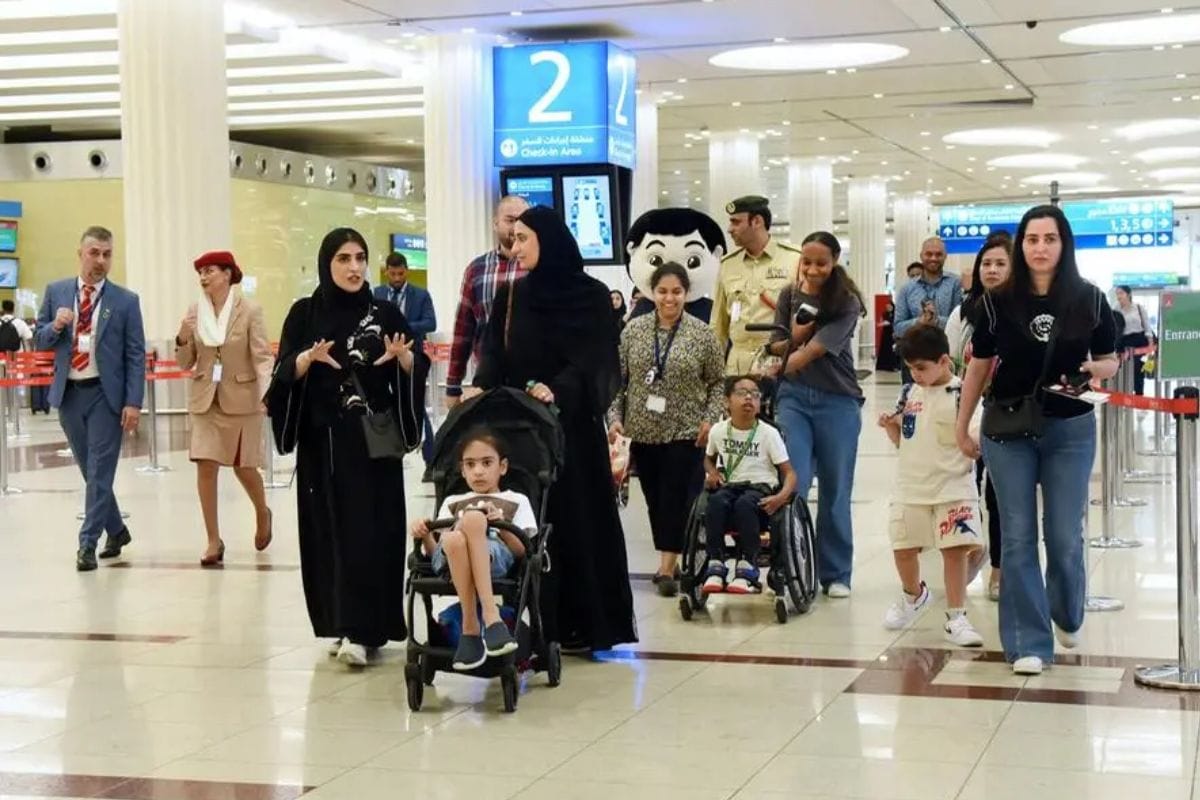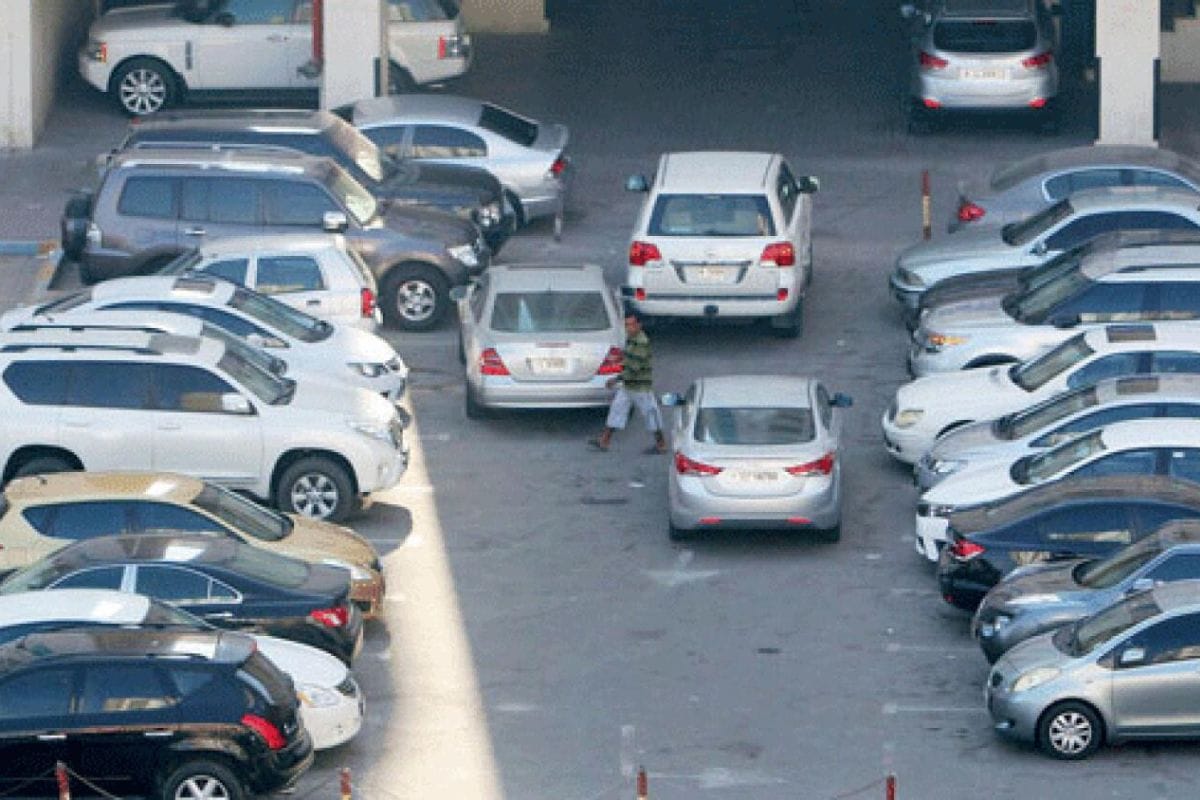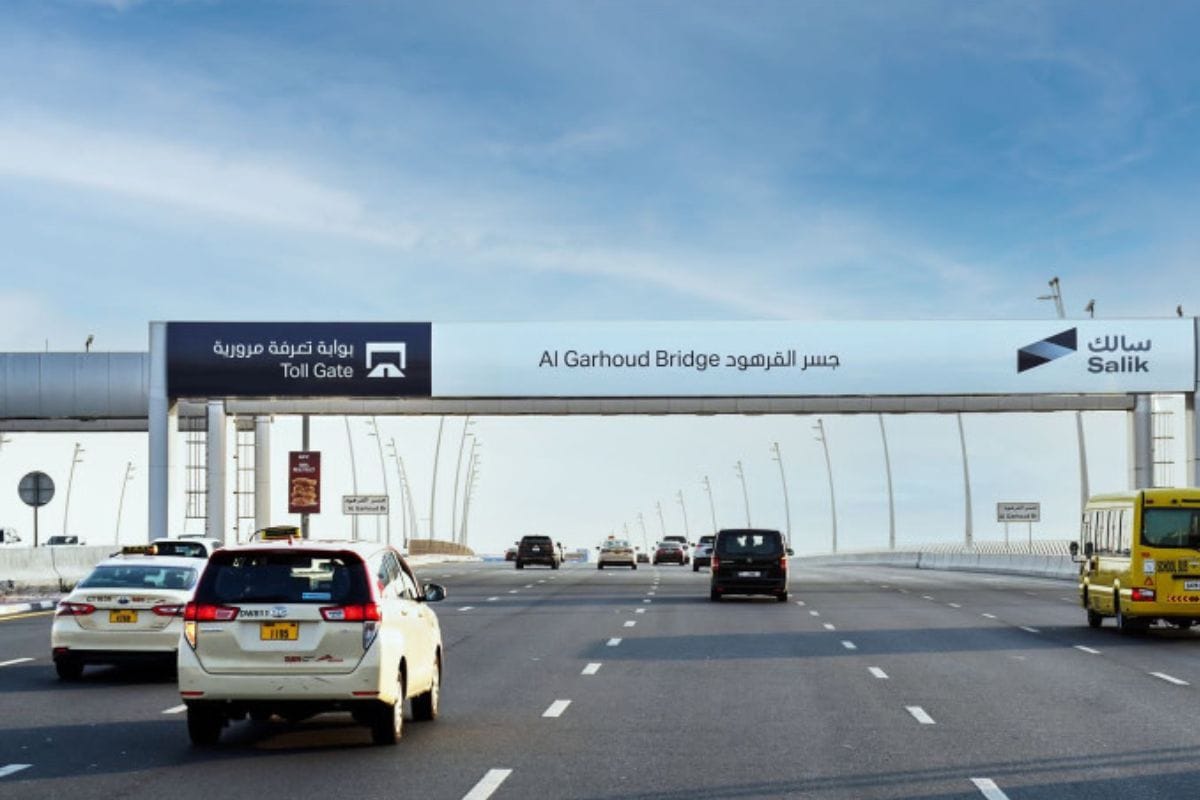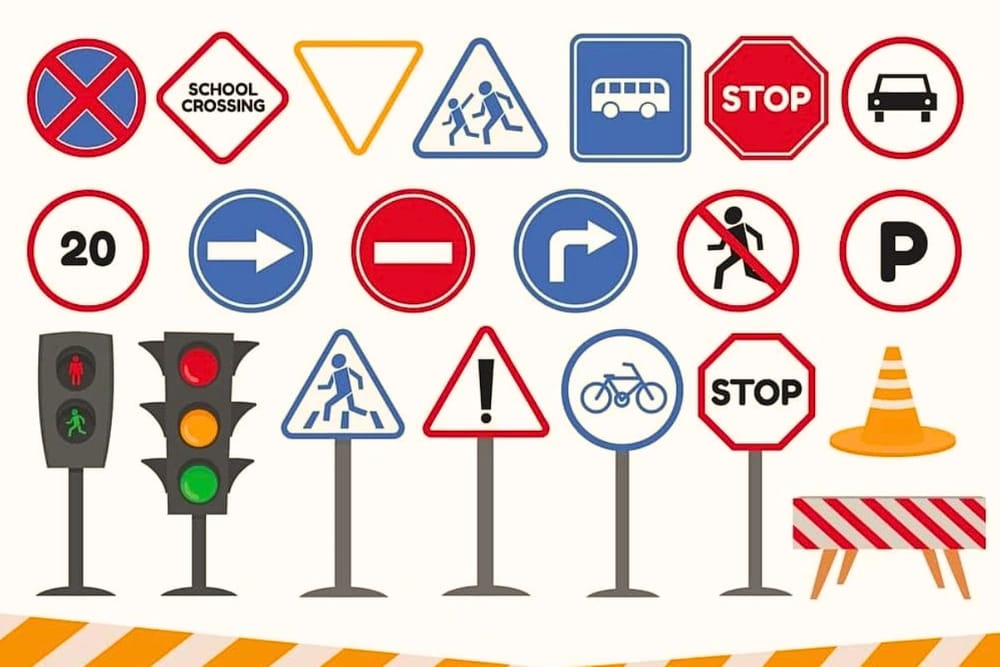Road signs play a critical role in ensuring the safety of all road users in the UAE. These signs are more than just markers; they provide essential information that helps drivers navigate roads safely, alerting them to upcoming changes in road conditions, pedestrian crossings, speed limits, and more. Understanding and adhering to these signs is not just about following the law—it's about protecting lives. Ignoring or misunderstanding road signs can lead to serious consequences, including fines, black points on your driving license, and, more importantly, accidents that could have been prevented.
The UAE boasts some of the best-designed roads globally, reflecting its commitment to road safety and infrastructure. Despite the increasing number of vehicles, the country has managed to maintain a high standard of road safety, partly due to the effective use of traffic signs. These signs help regulate traffic flow, offer crucial guidance, and alert drivers to potential hazards. Staying informed about these signs is essential for all drivers, especially as new signs are introduced to keep up with the evolving road network.
This article will walk you through the key traffic signs in the UAE, helping you understand what each one signifies and why it’s important to follow them.
Mandatory Traffic Signs

Mandatory traffic signs in the UAE are essential for directing drivers on specific actions they must follow on the road. These signs ensure compliance with traffic laws, such as speed limits and directional commands.
Examples of mandatory signs include:
- Turn Right Only: Directs drivers to take a right turn exclusively.
- Go Straight Ahead: Instructs drivers to continue straight without turning.
- Pass Either Side: Allows vehicles to pass on either side of an obstacle.
- Minimum Speed 60 km/h: Enforces a minimum speed limit on freeways.
- Keep Right/Keep Left: Guides drivers to stay in the designated lane.
- Roundabout Directions: Indicates the proper direction to navigate a roundabout.
CONTROL SIGNS
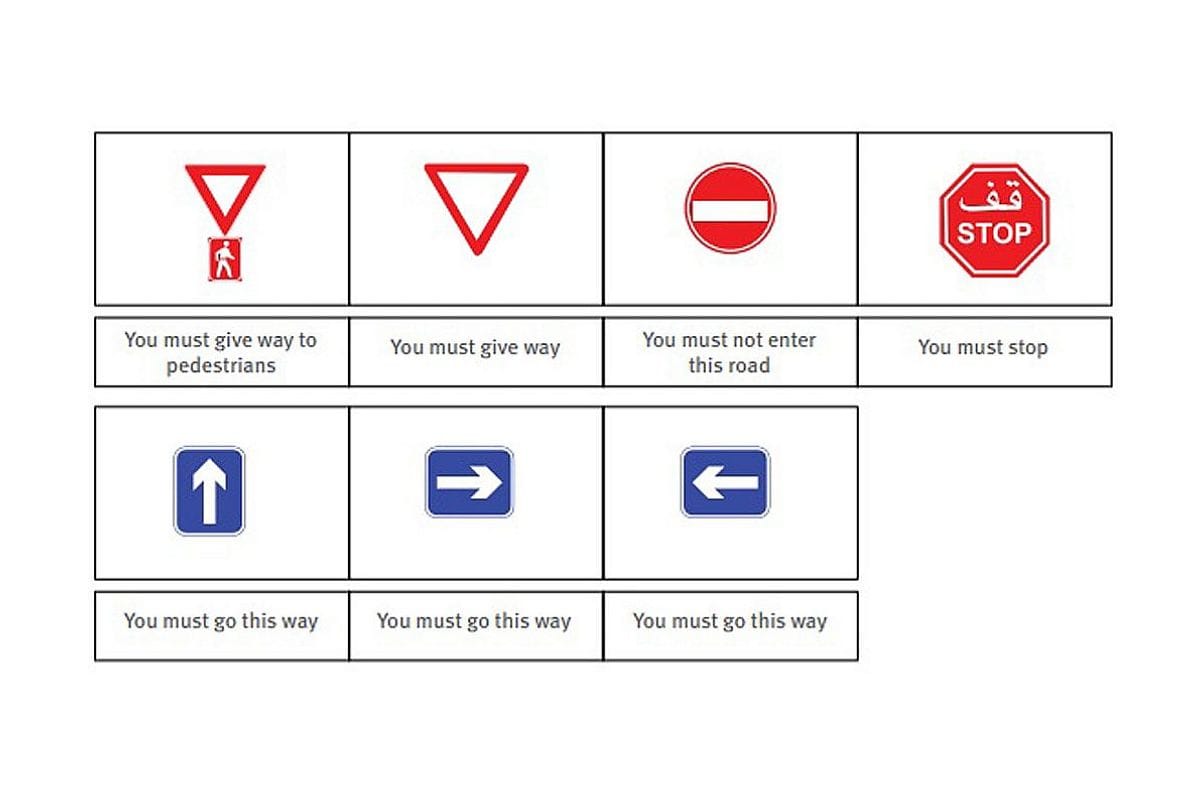
Control signs in the UAE are essential for regulating the movement of both vehicles and pedestrians. These signs are designed to be clear and direct, indicating the necessary direction of travel, right of way, and restrictions on road access.
Examples of control signs include:
- Yield to Pedestrians: Directs drivers to give priority to pedestrians.
- Give Way: Instructs drivers to yield to oncoming traffic or pedestrians.
- No Entry: Prohibits entry into specific roads or lanes.
- Stop: Requires drivers to come to a complete stop before proceeding.
- Directional Signs: Indicate whether drivers should proceed straight, turn left, or turn right.
Parking Control Signs
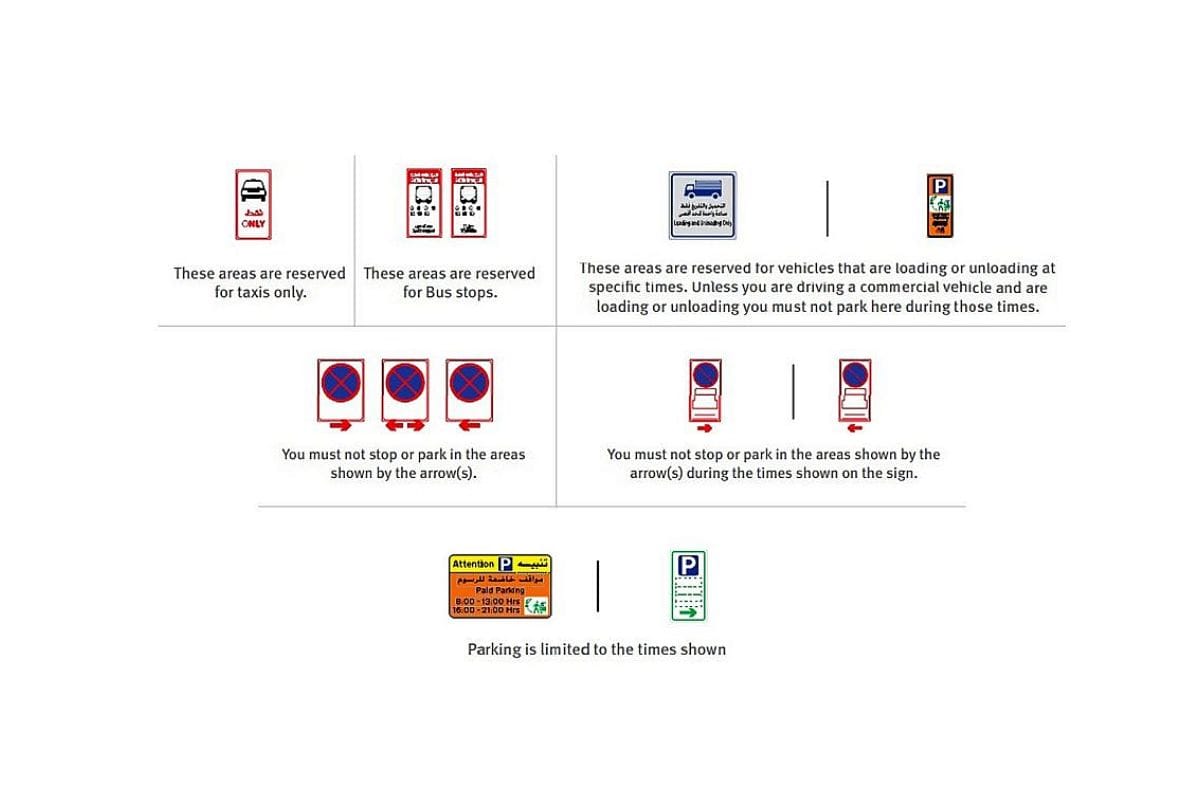
Parking control signs in the UAE serve a crucial role in helping drivers understand where they are allowed to park their vehicles and where parking is prohibited. These signs also offer information on time restrictions, indicating how long a vehicle can be parked in a designated area.
In some zones, parking is entirely prohibited, even if the driver remains inside the vehicle. Additionally, parking control signs often designate spaces reserved for specific types of vehicles, such as taxis, buses, or commercial vehicles. Light vehicles are not permitted to park in these reserved spaces.
Examples of parking control signs in the UAE include:
- Parking zones
- Areas reserved for taxis or buses only
- Zones designated for loading/unloading at specific times
- Paid parking areas with time limits indicated
- Metered parking on side streets
Handicapped Parking
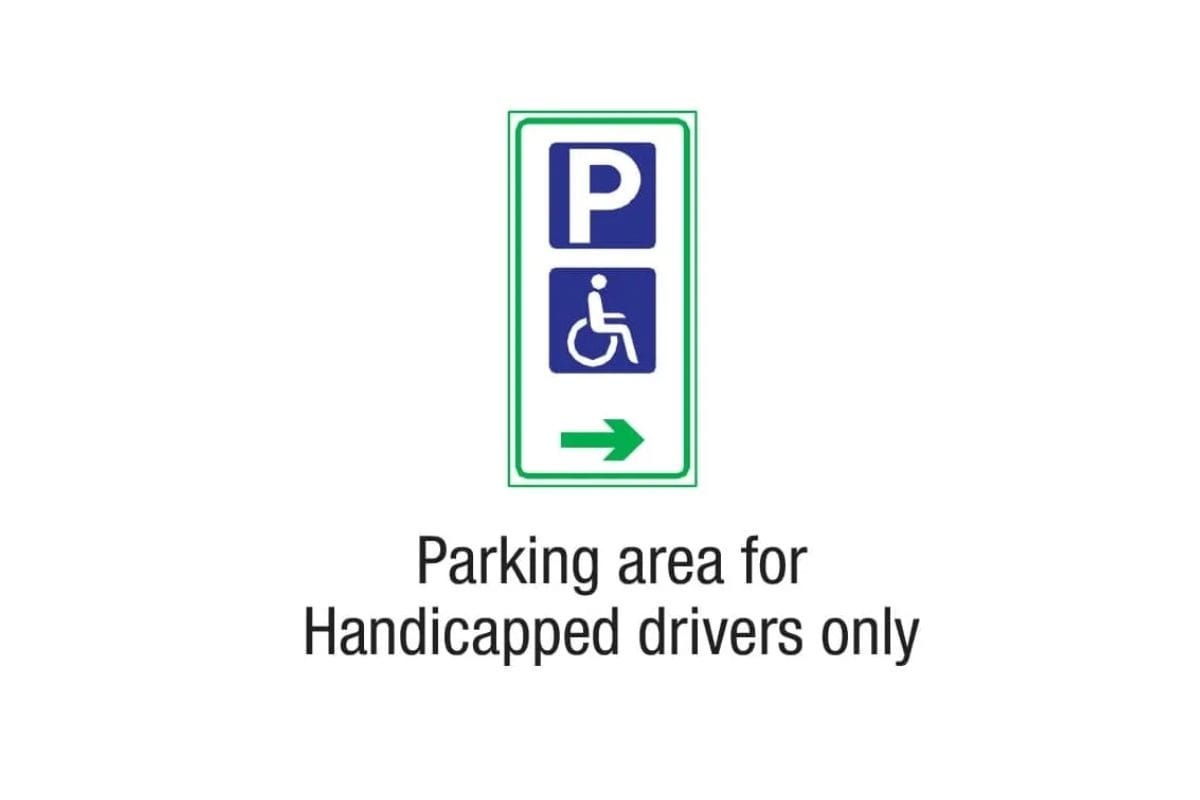
The UAE provides designated parking facilities for people of determination. A blue sign featuring a "P" and a wheelchair symbol marks these spots, specifically reserved for handicapped drivers. To use these parking spaces, individuals with special needs must obtain and display a valid permit. Without this permit, parking in these designated areas is not permitted.
Freeway Controlled Signs
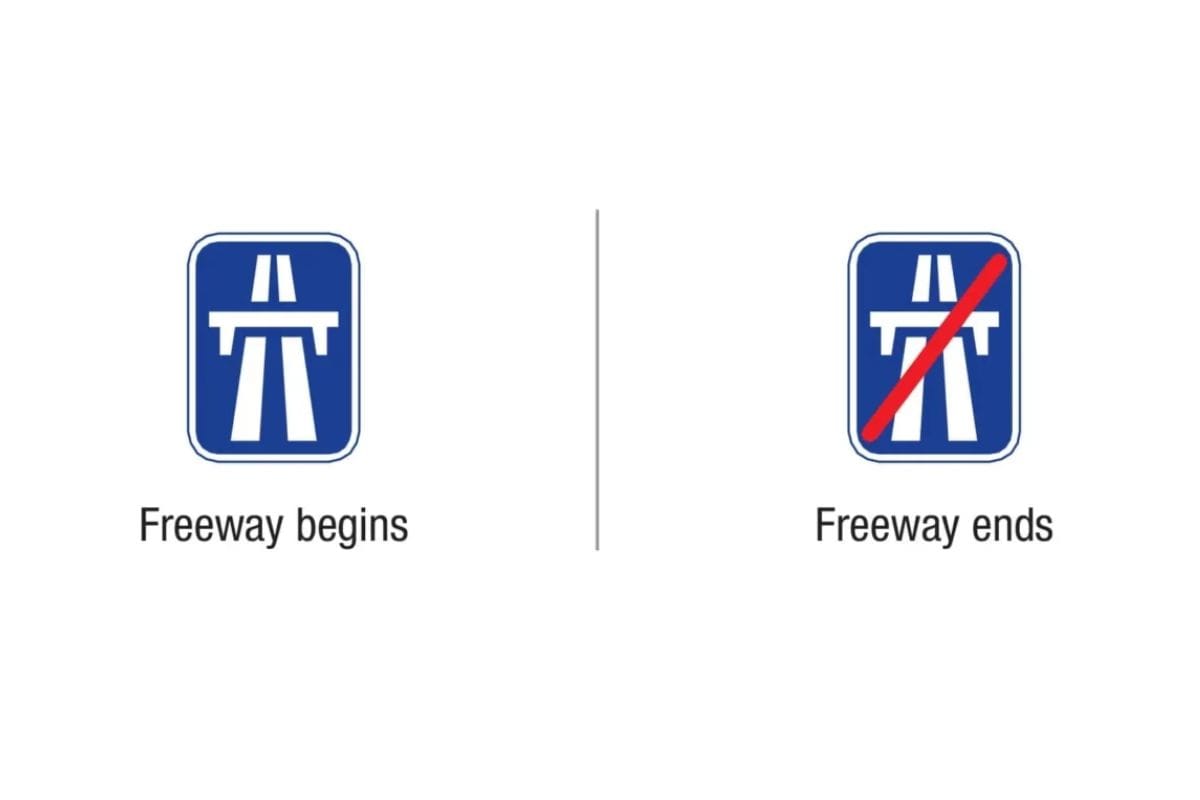
Freeway control signs in the UAE indicate which roads are classified as freeways and mark the start and end of these high-speed, controlled-access roads. These signs alert drivers when they are entering a freeway, where specific traffic rules and higher speed limits apply, and when they are exiting back to regular roadways, ensuring safe and smooth transitions.
Prohibitory Road Signs

Prohibitory signs indicate actions that drivers are forbidden to perform on the road. These signs play a crucial role in maintaining traffic order and ensuring safety by restricting certain behaviors that could lead to accidents or disruptions.
Examples of prohibitory signs in the UAE include:
- No Left Turn: Prohibits making a left turn at an intersection.
- No Right Turn: Restricts making a right turn at specific points.
- No Overtaking: Prevents vehicles from overtaking in designated areas.
- Speed Limit: Prohibits exceeding a specific speed limit, such as 80 km/h.
- No Horn: Restricts the use of horns in designated areas.
- No Hazardous Materials: Bans the transportation of hazardous materials.
- No Goods Vehicles: Prohibits goods vehicles from entering specific roads.
- No Pedestrians: Forbids pedestrians from accessing certain areas.
- No Cyclists: Restricts cyclists from using specific roads.
- No U-Turn: Prohibits making a U-turn.
- Maximum Height Limits: Sets a height limit for vehicles passing through an area.
Trailblazing Guide Signs
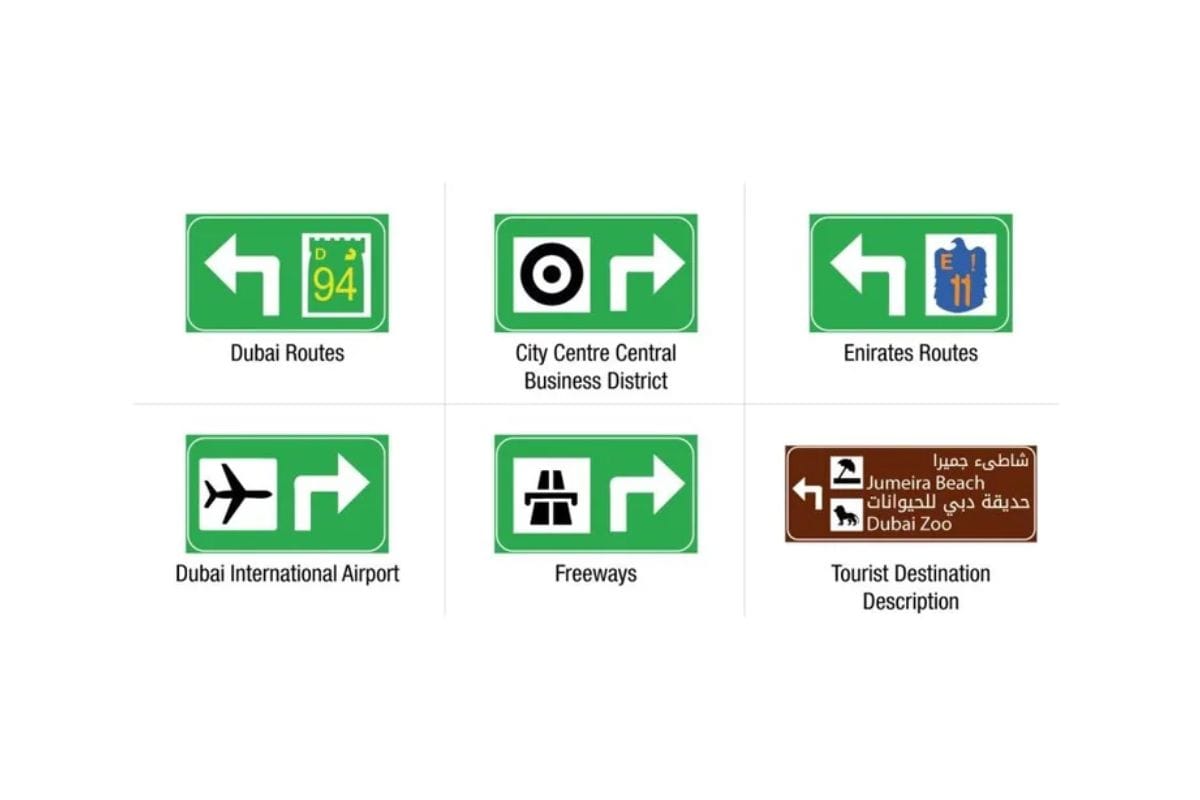
Trailblazing signs are crucial for guiding drivers to their intended destinations, ensuring they stay on the correct route. These signs are strategically placed on highways and other busy roads throughout the UAE to assist in navigation, especially for long-distance and inter-emirate travel. They typically include symbols and text to clearly indicate directions to major landmarks, airports, city centers, and tourist attractions.
Examples of trailblazing signs include:
- Airplane Symbol: Directs drivers to Dubai International Airport.
- Freeway Signs: Indicate major freeways and Emirates routes.
- City Center Signs: Guide drivers to central areas within cities.
- Tourist Destination Signs: Provide directions to popular tourist spots and attractions.
Guide Signs
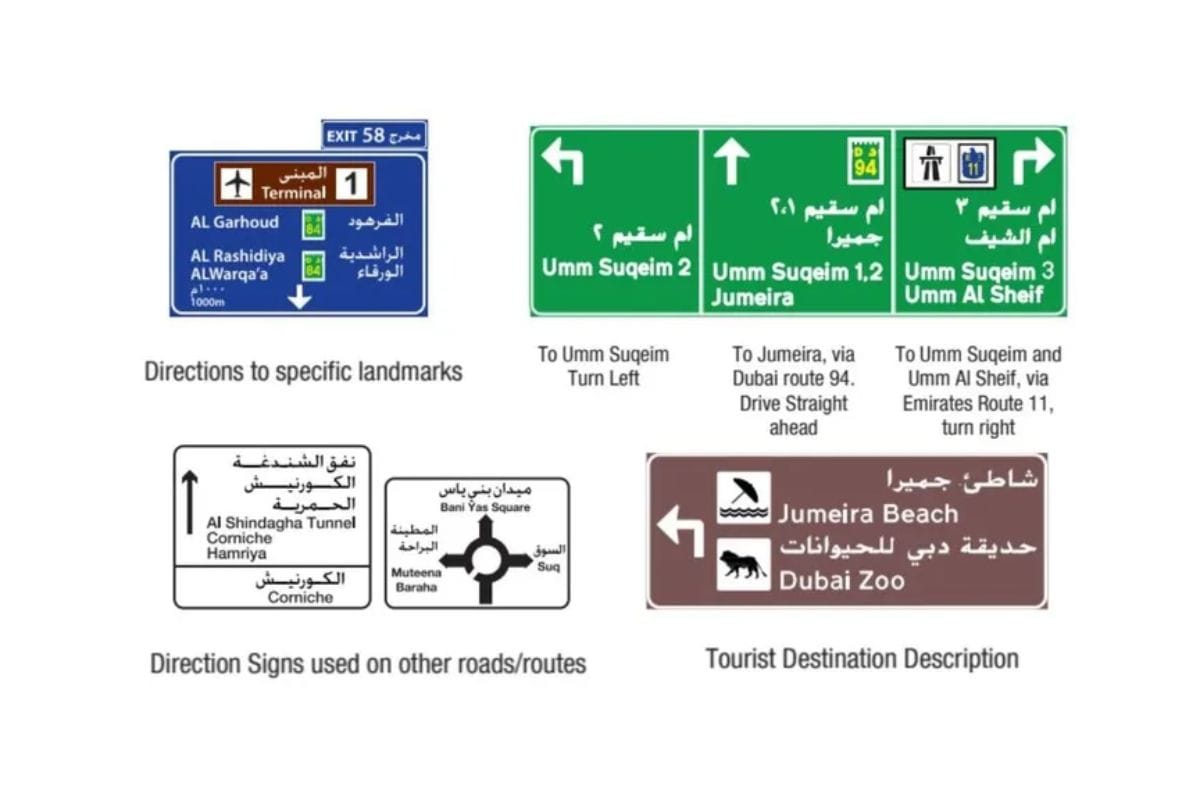
Guide signs serve as directional aids on the road, offering critical information to drivers about route numbers, street names, and destinations. These signs are typically bilingual, displaying text in both Arabic and English to ensure clarity for all road users.
The colors used in guide signs each have specific meanings:
- Blue: Used on national routes and includes the Emirates route symbol.
- Green: Found on local Dubai routes, featuring the emblem for Dubai routes.
- White: Indicates local roads, points of interest, or specific destinations.
- Brown: Provides additional information, often with symbols, to describe specific destinations like tourist attractions or heritage sites.
Advance Sign Guide
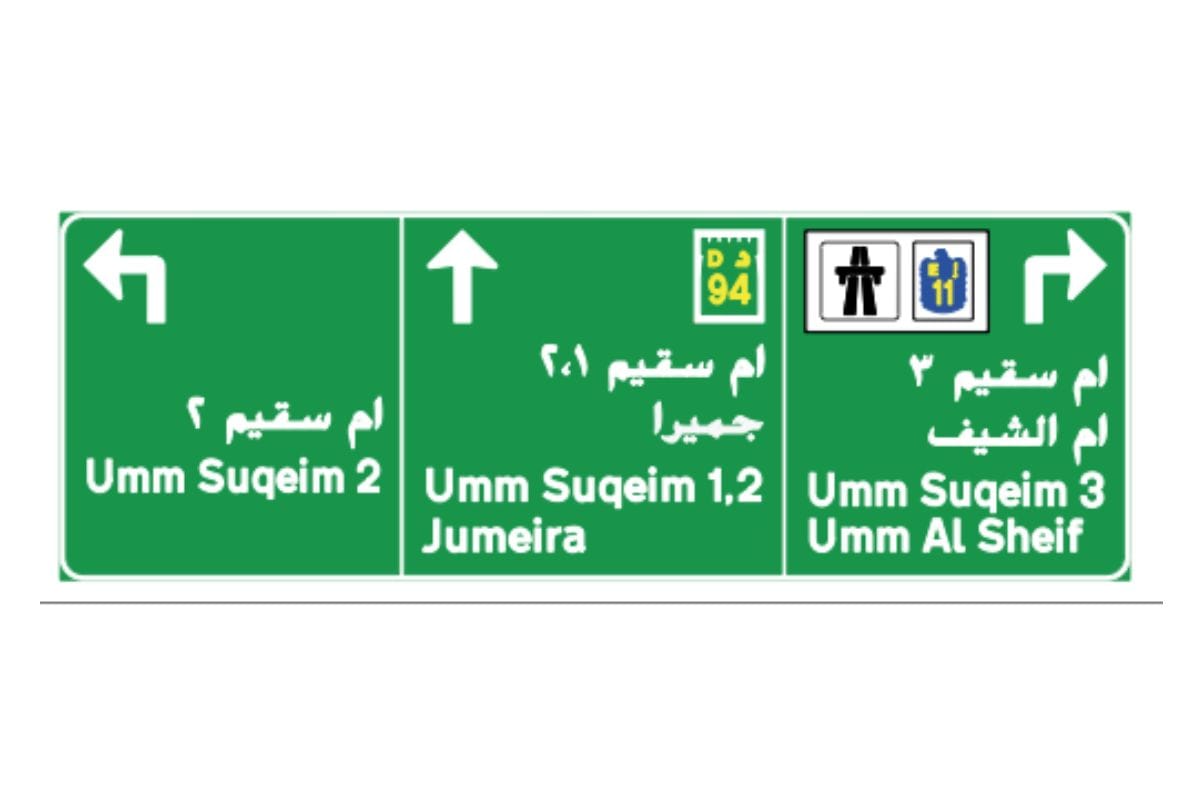
Advanced guide signs in the UAE are designed to provide clear directional information, ensuring smooth navigation for drivers. These signs feature route emblems distinguishing between local and national routes, along with trailblazing symbols that point drivers left, straight, or right. They also include essential details like distance markers and exit numbers, making it easier for drivers to anticipate their next move and reduce last-minute decisions on the road.
Exit Direction Signs
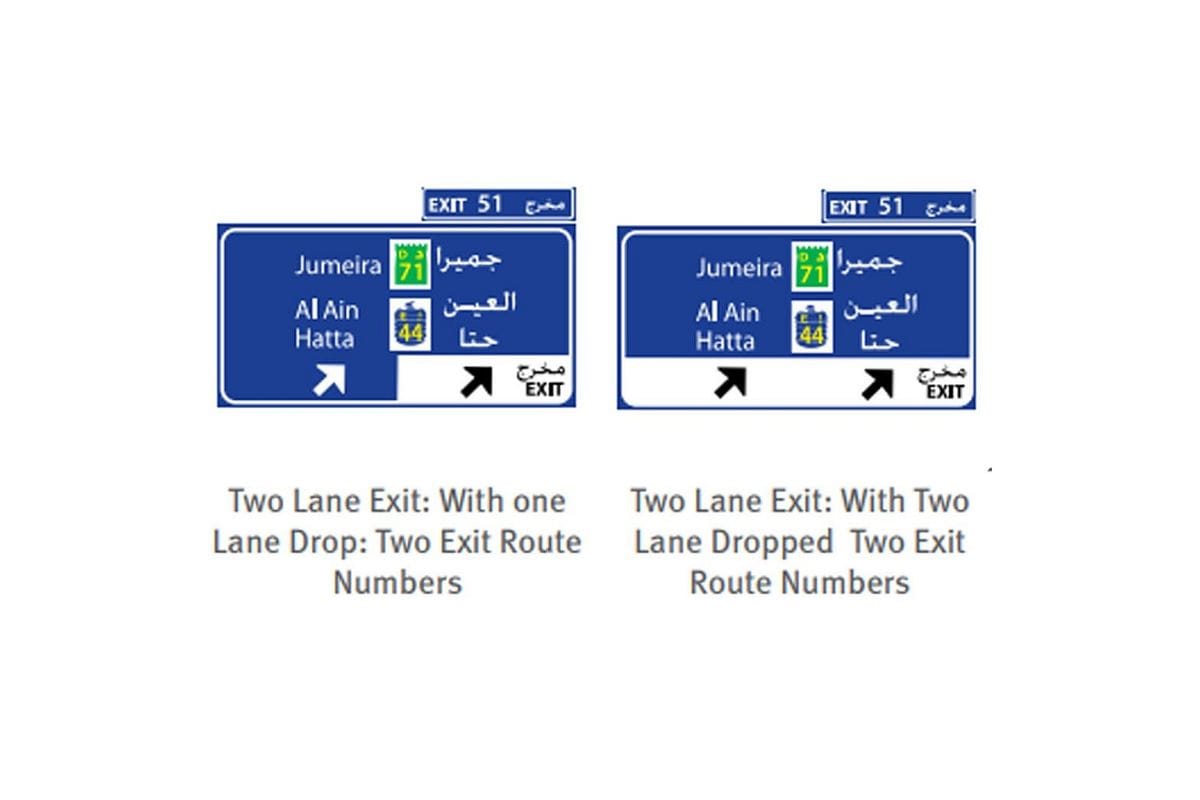
These signs guide drivers on which lanes to take before reaching an exit. The white exit panel specifically indicates that a particular lane is diverging from the main route and will no longer continue alongside it. Understanding these signs is crucial for staying on the correct path and avoiding sudden lane changes.
WARNING SIGNS
Warning signs are crucial for ensuring safety on UAE roads by alerting drivers to potential hazards or upcoming junctions that might not be immediately visible. These signs help prevent accidents by providing early warnings about conditions that could impact driving.
Typically, warning signs are designed as triangles with a bold red border and a white background, featuring symbols that indicate the nature of the warning. They are categorized into three main types:
Advanced Warning Signs
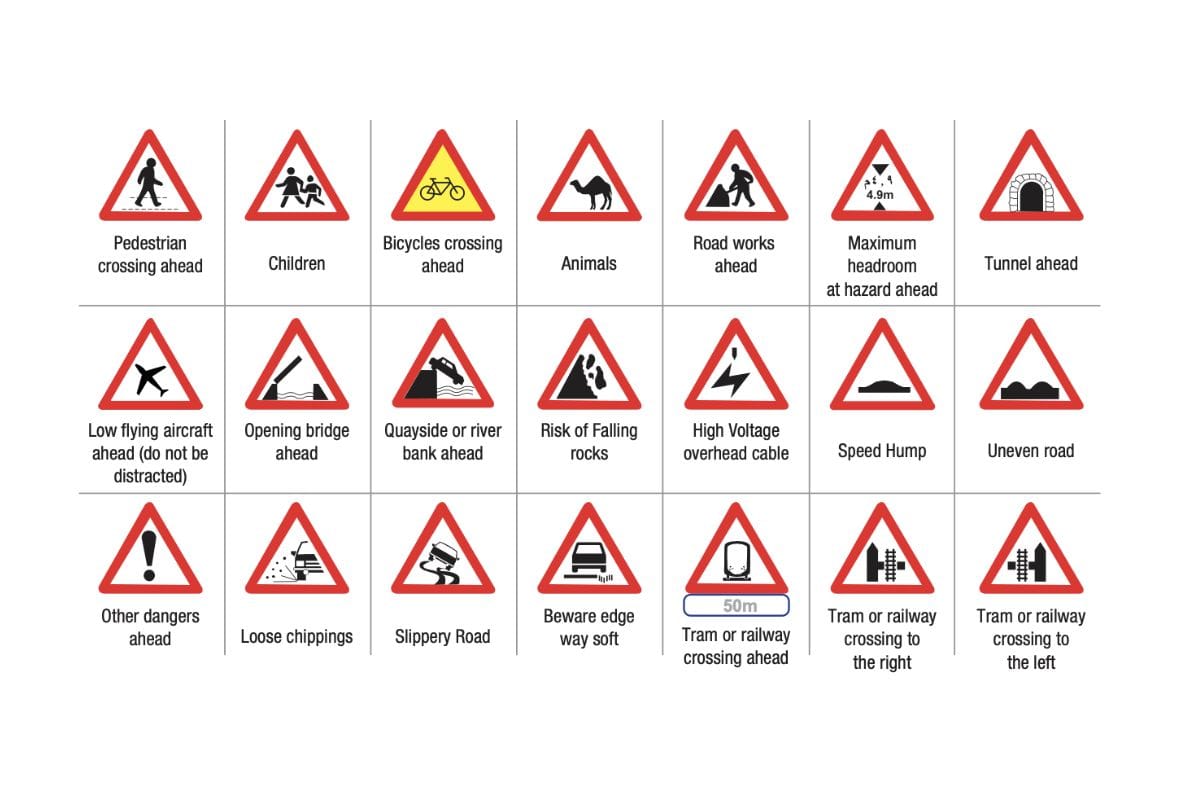
Advanced warning signs provide early alerts to upcoming road conditions or hazards, allowing drivers to adjust their driving behavior in advance. Common examples include:
- Traffic Signs Ahead: Alerts drivers to the presence of upcoming traffic control signs.
- Stop Sign Ahead: Warns drivers to prepare for a stop sign.
- Give Way Sign Ahead: Indicates an upcoming yield sign where drivers must give way to other traffic.
- Roundabout Ahead: Signals the approach of a roundabout, requiring reduced speed and readiness to navigate.
- T-Junction Ahead: Warns of an intersection where the road meets perpendicularly.
- Pedestrian Crossing: Alerts drivers to areas where pedestrians frequently cross.
- Curve/Bend Signs: Indicate upcoming curves or bends in the road, such as left or right turns, to prompt caution.
- U-Turn Ahead: Indicates a location where a U-turn is possible or advised.
Diagrammatic Warning Signs
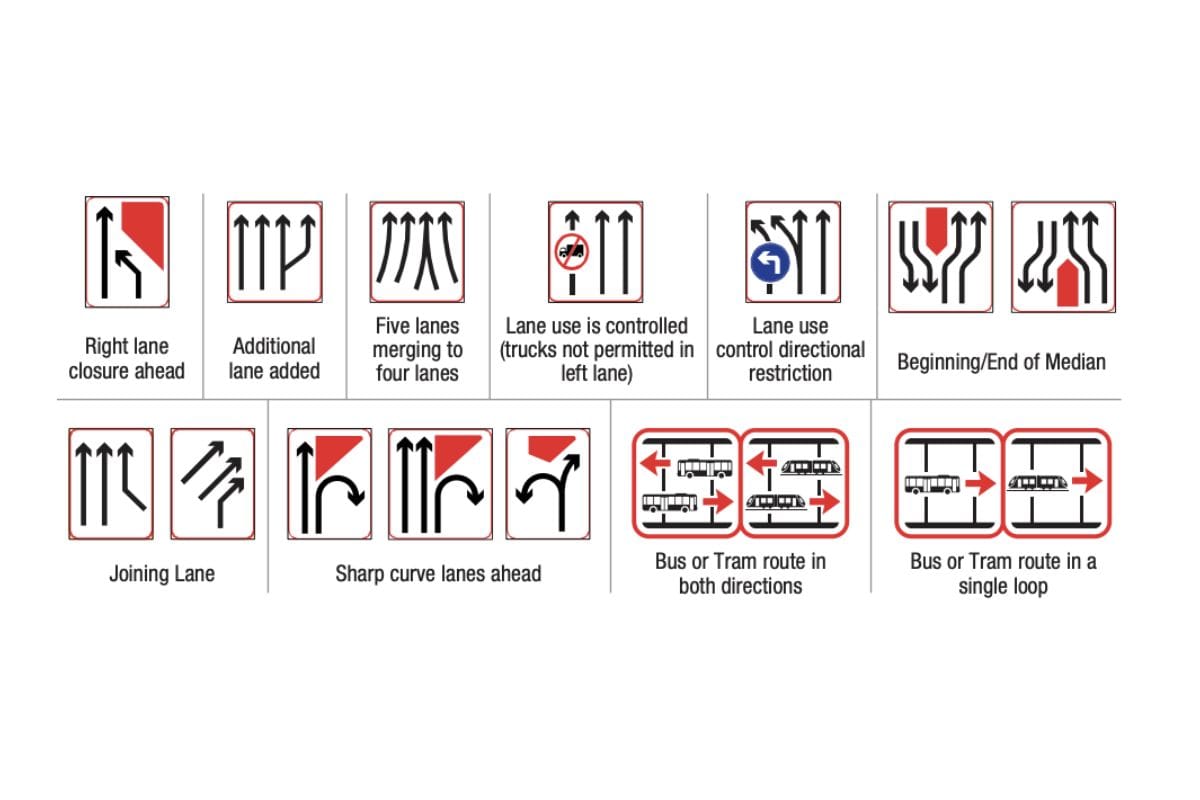
Diagrammatic warning signs are employed to capture drivers' attention more effectively, especially on high-speed roads where simple triangular signs may not suffice. These signs often include:
- Obstruction Ahead: Marks areas where road conditions or obstacles might impede traffic flow.
- Additional Lane: Alerts drivers to the addition of a new lane, helping to manage increased traffic.
- Regulated Lane Use: Indicates lanes designated for specific types of vehicles, such as trucks or buses.
- Lanes Merging: Warns drivers of upcoming lane merges, requiring adjustments in lane positioning.
Hazard Marker Signs
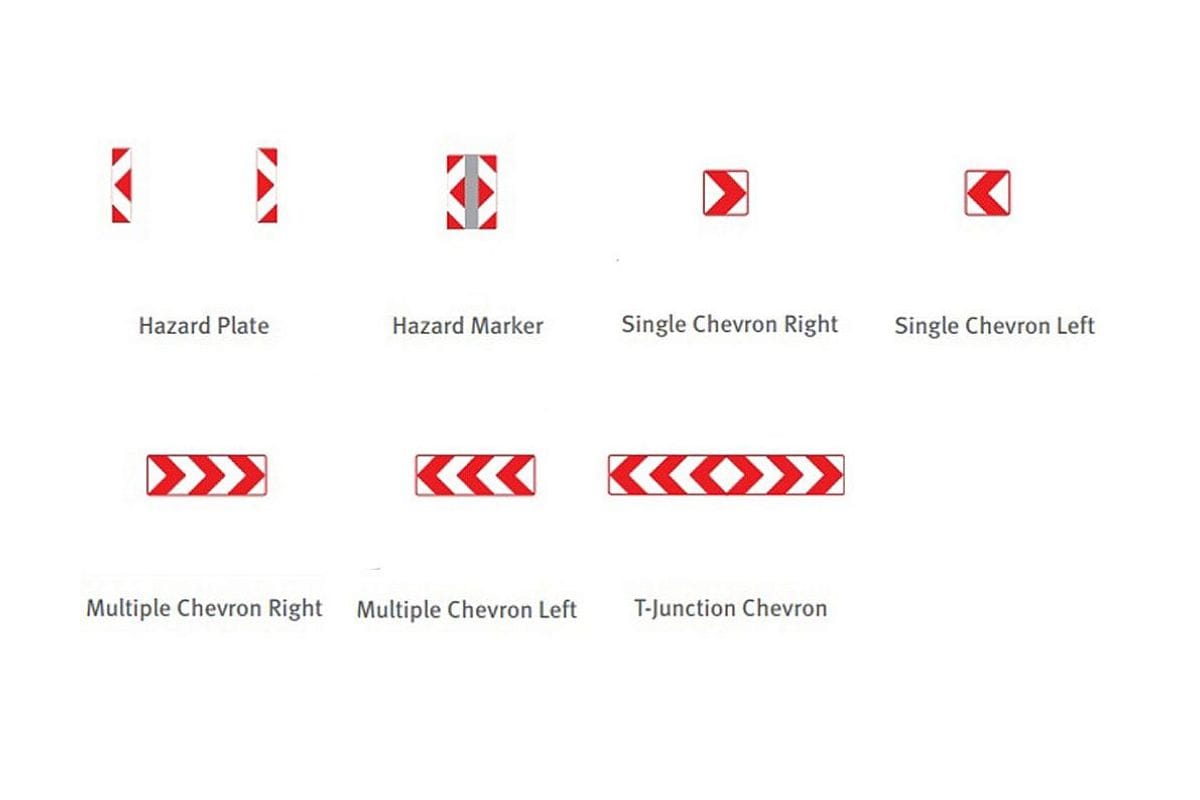
Hazard marker signs are used to indicate physical obstacles or hazards on the road that could pose a risk to drivers. These signs are essential for alerting drivers to potential physical dangers, such as:
- Hazard Plate: Provides a general warning of a hazardous area.
- Hazard Marker: Identifies specific hazards on or near the road.
- Chevron Signs: Use single or multiple chevrons pointing left or right to indicate curves or changes in the road alignment.
- T-Junction Chevron: Indicates a T-junction where additional caution is required due to the intersecting roads.
Other Important UAE Traffic Signs
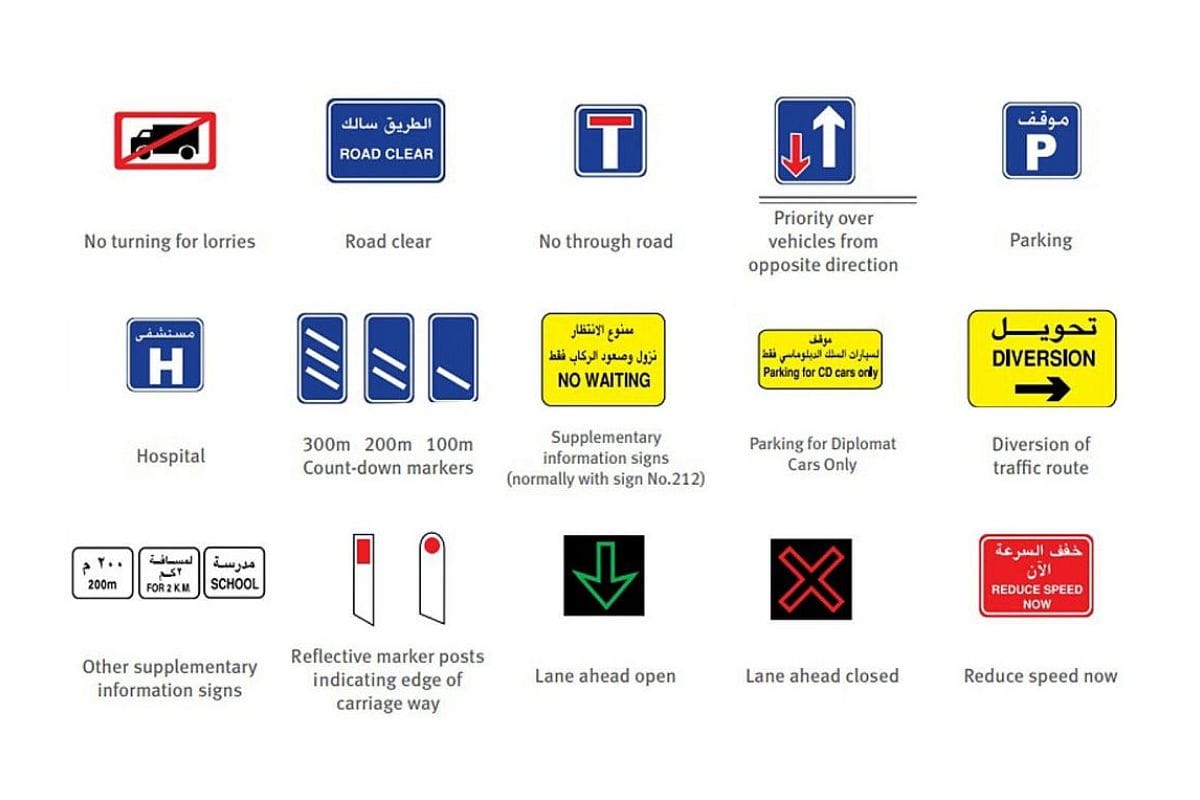
In addition to the main categories of traffic signs, the UAE employs several crucial signs that address specific road conditions and regulations:
- No Turning for Lorries: This sign restricts large vehicles, such as trucks and lorries, from making certain turns. It ensures smooth traffic flow and minimizes potential disruptions caused by large vehicles navigating tight turns.
- Road Clear: Used to indicate that the road is unobstructed and free from hazards, this sign assures drivers that they can proceed without immediate concerns about road blockages or obstructions.
- No Through Road: This sign alerts drivers that the road they are on does not lead through to another street or area. It helps in preventing drivers from entering dead-end streets and potentially getting stuck.
- Priority Over Vehicles from Opposite Direction: This sign designates priority for vehicles traveling in one direction over those coming from the opposite side. It is crucial at intersections and narrow roads to avoid collisions and ensure smooth traffic flow.
- Parking: Marks designated areas where vehicles can legally park. These signs often include specific regulations regarding time limits or payment requirements.
- Hospital: Indicates the proximity of a hospital. This sign is particularly important for emergency situations, guiding drivers to nearby medical facilities.
- Countdown Markers: Provide drivers with a visual countdown to upcoming road conditions or intersections. These markers help in preparing for changes in road layout or traffic conditions.
- Supplementary Information Signs: These offer additional details relevant to road conditions, including lane usage, upcoming roadworks, or other important information that may impact driving.
- Parking for Diplomat Cars Only: Reserved parking areas specifically for vehicles with diplomatic plates. These signs ensure that parking spaces are available for diplomatic personnel.
- Diversion of Traffic Route: Directs drivers to alternative routes due to road closures or construction. This helps manage traffic flow and minimizes delays.
- Reflective Marker Posts: Placed along the edge of the carriageway to enhance visibility at night or in poor weather conditions. These markers guide drivers along the road's edge and help prevent veering off course.
- Lane Ahead Open/Close: Indicates whether a lane ahead is open or closed, helping drivers make informed decisions about lane changes and route adjustments.
- Reduce Speed Now: Commands drivers to slow down immediately due to potential hazards or changes in road conditions. It is crucial for ensuring safety in areas where reduced speed is necessary to avoid accidents.
So there you have it—an in-depth look at UAE traffic signs that can make a big difference in your driving experience. This guide isn’t just about rules and regulations; it’s a tool to help you navigate the roads with ease and confidence. Think of it as your road map to staying safe and avoiding those pesky fines. Keep this guide handy, revisit it as needed, and remember: being informed is not just about following the law, but about creating a safer, smoother journey for everyone on the road. Safe travels and happy driving!
Also Read:
